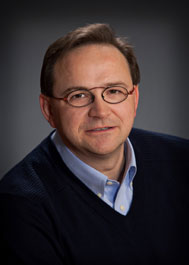Franz Kärtner joins CFEL
Franz X. Kärtner joins CFEL as Division Leader for Ultrafast X-rays

Franz X. Kärtner accepted the joint appointment of the University of Hamburg and DESY to become the head of the Ultrafast Optics and X-Rays Division in the Center for Free-Electron Laser Science on January 1st, 2011.
He received his Diploma and Ph.D. degree in Electrical Engineering from Technische Universität München, Germany in 1986, and 1989, respectively. In 1991, he was awarded a Feodor-Lynen Fellowship of the Alexander von Humboldt Foundation to carry out research at Massachusetts Institute of Technology (MIT). From 1993 to 1997, he was a principal investigator at Swiss Federal Institute of Technology, earning his Habilitation degree in Experimental Physics. After a visiting professorship at MIT in 1998, he joined Universität Karlsruhe (TH) as Professor of Electrical Engineering and held the Chair for Photonics and Terahertz Technology. In 2001, he returned to MIT, where he was a full professor in the Department of Electrical Engineering and Computer Science till end of 2010 and continues to hold an Adjunct Appointment. He served as Program and General Co-Chair for the LEOS Annual Meetings 2002 and 2004, the Conference on Lasers and Electro-Optics 2007 and 2009, and he is currently Chair of the Ultrafast Optical Phenomena Technical Group of OSA 2008-2010 and Commission D, Electronics and Photonics, of the International Union of Radio Scientists (URSI). He is a fellow of the Optical Society of America and the Institute of Electrical and Electronics Engineers.
Kärtner's research interests include classical and quantum noise in electronic and optical devices; few-cycle optical laser sources and their applications in frequency metrology, ultrafast X-ray sources and attosecond science; ultralow timing jitter femtosecond lasers and attosecond photonics such as precision timing distribution in advanced accelerators and light sources and photonic analog-to-digital conversion. He has published more than 220 peer reviewed journal articles and has been awarded over 20 patents.